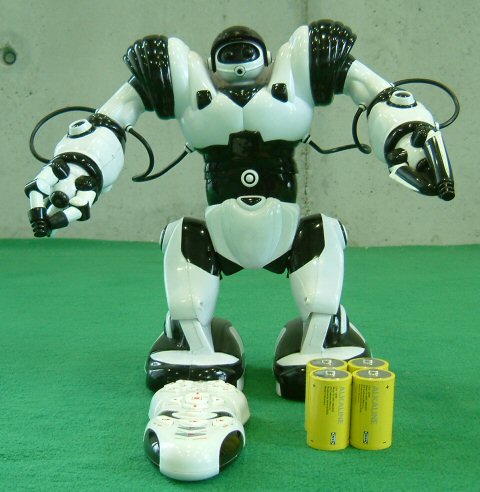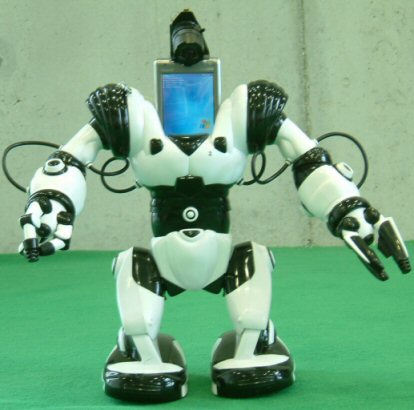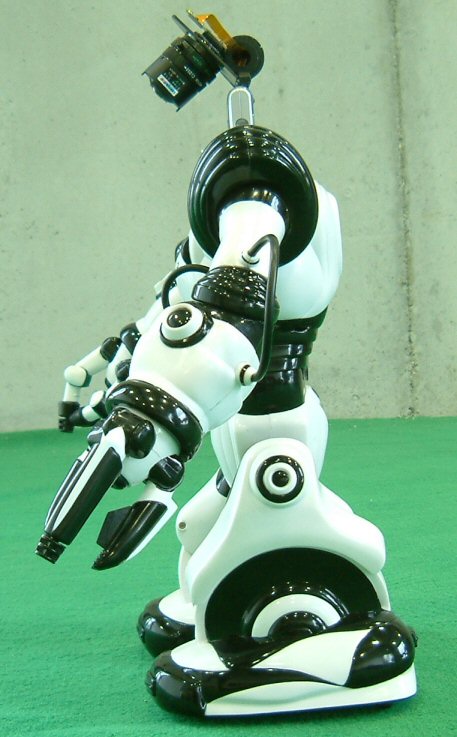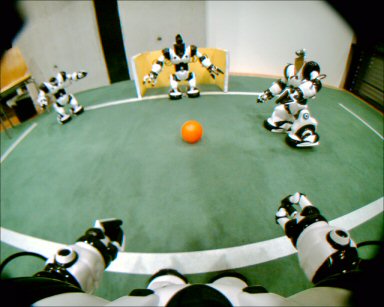|
RoboSapien - A low-cost humanoid robot platform |
Original RoboSapien
RoboSapien has been designed by Mark W. Tilden according to the principles of BEAM robotics. Power is supplied by four mono (D) type batteries, which are located in the robotīs feet. The resulting low center of gravity and the large robot feet ease the balancing problem faced by other bipedal robots significantly.

RoboSapien is controlled by the user that pushes buttons on a remote control unit. These buttons correspond to 67 motion primitives that are carried out by the robot. It is possible to let the robot walk forward or backward with two different speeds and to let it turn on the spot. Arms can be raised and lowered as well as twisted.
The robot has a total of nine degrees of freedom which are driven by seven motors. One motor in each leg moves two joints in the hip and the ankle, keeping the foot orthogonal to the trunk. A trunk motor tilts the upper body to the left and right. One motor in each shoulder raises and lowers the arm and one motor in each elbow twists the lower arm. RoboSapien has two gripper hands consisting of three fingers each. While twisting the lower arm outwards opens its gripper, twisting it inwards closes the gripper again.
Augmented RoboSapien
We replaced RoboSapien's head by a Pocket PC and a camera. We cut a rectangular opening into its plastic cover to slide the lower part of the Pocket PC between RoboSapien's shoulders. For the Pocket PC we use a Fujitsu-Siemens Loox 720. The vision sensor consists of a modified Lifeview FlyCAM 1.3 Megapixel Compact Flash camera and a lens (H2616FICS) which we attached in front of the the CMOS image sensor to broaden its field of view.
 |
 |
The Pocket PC runs computer vision and behavior control software: images captured from the CF camera are analyzed to detect objects of interest, such as the ball, the goals, and other players. Based on the perception of the surrounding the behavior control decides how to move the robot. The resulting motion commands are send from the Pocket PC to the robot via a learning remote program and the Pocket PC's infrared interface. The robots can communicate with each other and with an external computer via wireless LAN.

The world from RoboSapien's perspective